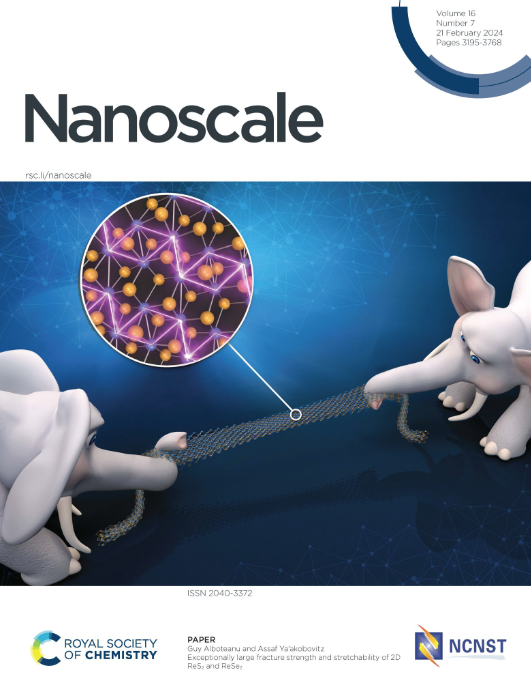Studying How Small Silver Clusters Grow and Their Optical Properties
IF 5.8
3区 材料科学
Q1 CHEMISTRY, MULTIDISCIPLINARY
引用次数: 0
Abstract
Understanding the mechanisms of cluster growth and precisely tailoring the structure-property relationship at the atomic level is challenging and essentially important in chemistry. In this study, we present a combined experimental and theoretical investigation into the structural stability, optical properties, and growth mechanisms of a series of small silver clusters coordinated by halides and nitrates along with 2-(diphenylphosphino)pyridine (dppy) protection ligands. Using single-crystal X-ray diffraction (XRD), we uncovered the structural evolution of these clusters and elucidated the factors contributing to their stability. Interestingly, all these small clusters displayed dual emissions in the UV and red regions, with the UV emission showing enhanced intensity relative to the red emission at around 620 nm when strong σ-donating ligands or polynuclear metallic cores were introduced. The unique optical properties were further analysed through comprehensive UV-visible spectroscopy, revealing redshifts in the dominant absorption band as the cluster size increases. Density functional theory (DFT) simulations corroborated the observed UV spectra and confirmed the occurrence of ligand-to-metal charge transfer (LMCT). This multidisciplinary study merges experimental and computational methods to deepen our understanding of the structural and optical properties of small silver clusters, shedding light on their growth mechanisms and enabling the targeted design of novel clusters for applications in nanotechnology and materials science.研究小银团簇的生长及其光学性质
在化学中,理解簇生长的机制和精确地剪裁原子水平上的结构-性质关系是具有挑战性的,也是至关重要的。在这项研究中,我们结合实验和理论研究了一系列由卤化物和硝酸盐以及2-(二苯基膦)吡啶(dppy)保护配体配位的银簇的结构稳定性、光学性质和生长机制。利用单晶x射线衍射(XRD)揭示了这些团簇的结构演变,并阐明了影响其稳定性的因素。有趣的是,这些小簇在紫外区和红光区都表现出双发射,当引入强的σ给体或多核金属芯时,在620 nm附近的紫外辐射强度相对于红光辐射强度增强。通过综合紫外-可见光谱进一步分析了独特的光学性质,揭示了随着簇大小的增加,主要吸收带的红移。密度泛函理论(DFT)模拟证实了观察到的紫外光谱,并证实了配体到金属电荷转移(LMCT)的发生。这项多学科的研究结合了实验和计算方法,加深了我们对小银团簇的结构和光学性质的理解,揭示了它们的生长机制,并为纳米技术和材料科学应用的新团簇的目标设计提供了可能。
本文章由计算机程序翻译,如有差异,请以英文原文为准。
求助全文
约1分钟内获得全文
求助全文
来源期刊

Nanoscale
CHEMISTRY, MULTIDISCIPLINARY-NANOSCIENCE & NANOTECHNOLOGY
CiteScore
12.10
自引率
3.00%
发文量
1628
审稿时长
1.6 months
期刊介绍:
Nanoscale is a high-impact international journal, publishing high-quality research across nanoscience and nanotechnology. Nanoscale publishes a full mix of research articles on experimental and theoretical work, including reviews, communications, and full papers.Highly interdisciplinary, this journal appeals to scientists, researchers and professionals interested in nanoscience and nanotechnology, quantum materials and quantum technology, including the areas of physics, chemistry, biology, medicine, materials, energy/environment, information technology, detection science, healthcare and drug discovery, and electronics.
 求助内容:
求助内容: 应助结果提醒方式:
应助结果提醒方式:


